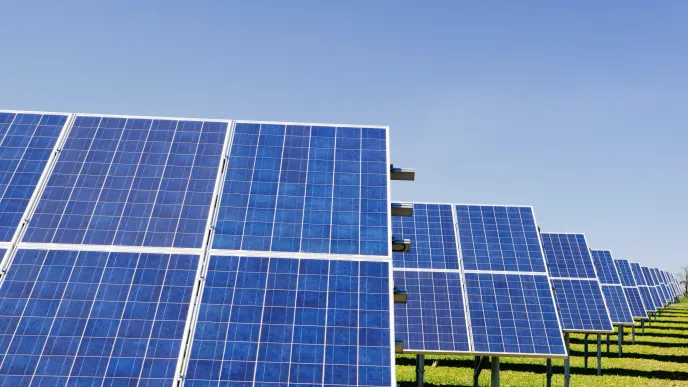The dramatic decline in the price of photovoltaic (PV)-generated electricity and the rapid expansion of production capacities make PV a game changer in the global energy system. In the future, solar power will not only be relevant for the electricity sector, but will also supply the transportation and heating sectors as well as industry and chemical processes. This presents both opportunities and challenges – on the energy system level as well as for R&D and industry.
Leading international PV researchers gathered by the Global Alliance for Solar Energy Research Institutes describe how solar PV will emerge as the central source of energy by 2050 and how this will transform the global energy system. Their insights are published in an article in Science, one of the leading academic science journals published by American Association for the Advancement of Science (AAAS).
Solar energy has the potential to play a central role in the future global energy system. According to the researchers, this is due to the scale of the solar resource, its predictability, and its ubiquitous nature. By the end of the year 2018, the global installed solar photovoltaic (PV) capacity had reached 500 gigawatts (GW) and the leap to the terawatt scale (1000 GW) is expected already by the year 2023.
A key driver for the terawatt scale role of PV is the rapid decrease in costs. The current global average PV module selling price is below 0.25 USD/Watt Peak (Wp). Only a few years ago, it was estimated that this price level would be reached in late 2020s. PV electricity cost is now on par or even lower than reference prices for industry in the US, Germany and Japan.
The article describes how practically all parts of the energy system will be supplied with solar electricity, directly whenever possible. When direct supply is not possible, different power-to-X processes can be implemented. These include synthetic fuels, chemicals, metal refining, seawater desalination and heat supply.
Especially defossilising the transport sector and industry with power-to-fuels and chemicals will create a huge demand for solar PV. The researchers define grid integration of PV and low-cost energy storage technologies as the greatest challenges ahead when PV emerges as the central source of energy. Progress in new solar cell material combinations, such as perovskite/silicon tandem cells, are expected to further increase energy conversion efficiency, and thus reduce the cost of solar electricity even more.
LUT's modelling results as the foundation for energy system scenarios
LUT Solar Economy team is one of the contributors in this research. Their research results serve as a solid foundation for scenarios of the global energy system view, and the role of solar PV for the overall energy supply.
"The climate crisis calls for urgent and sustainable solutions, which maintain and enable equal standards of living for all people in the world. Solar PV will be the major source of energy to get this venture mastered", says Professor Christian Breyer.
LUT's comprehensive understanding of power-to-X applications, such as synthetic fuels and chemicals and seawater desalination, is a central part for the understanding of the systemic role of solar PV in the broad electrification of the entire energy system.
"These common insights of leading PV researchers show the way to the Solar Age. Solar PV offers us low-cost electricity to be used for practically all energy demands of humankind. By research efforts and supporting technologies, such as grid integration, storage and power-to-X, we can electrify almost the whole energy system primarily by solar PV", concludes Breyer.
More information:






